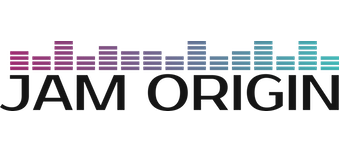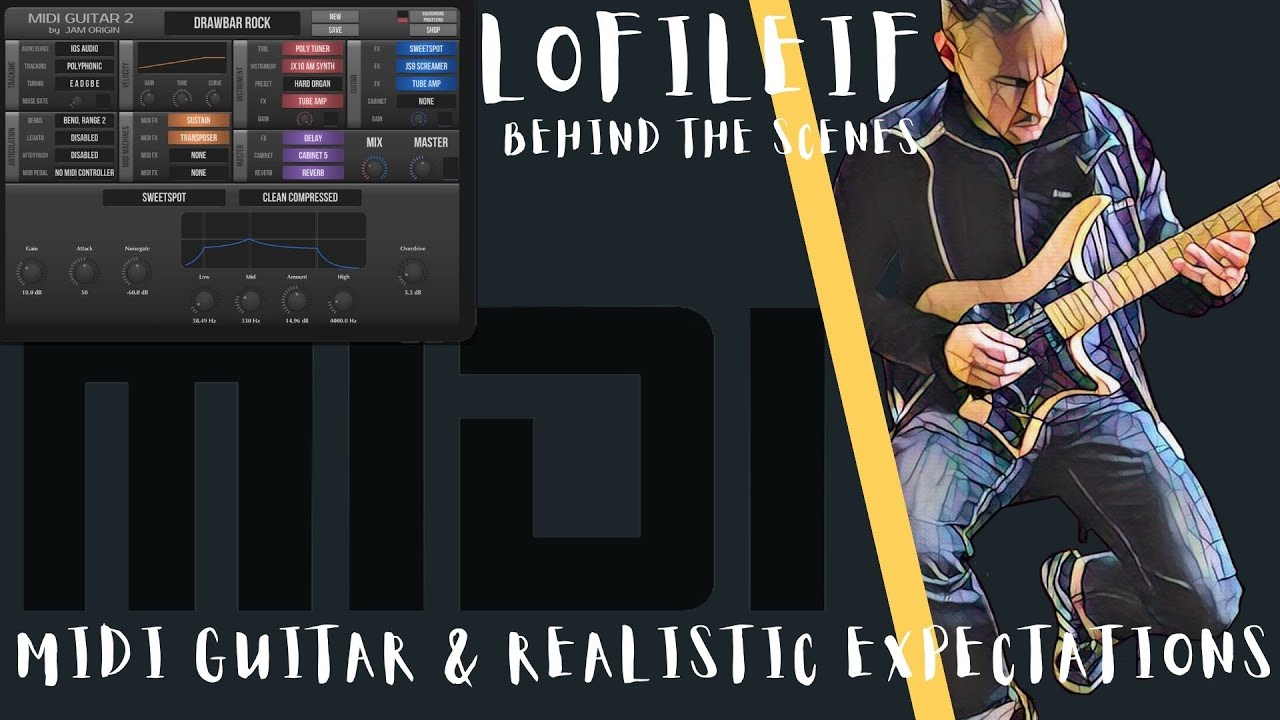Right, I’ve been using the trial version of Midi Guitar 2 with Logic Pro. I’ve the CONCEPT of the tool, and I would love to be able to buy the full version, but…
The one thing stopping me from buying the full version is the sheer awkwardness and lack of accuracy of the tool. I play a riff, I get a very vague reading of my riff, with a crap ton of random, off key notes thrown in, and random note lengths that just seem to come as they please. For about 90% of the time the software seems to have a mind of it’s own, doing as it pleases and giving me an output equal to that of someone slamming a keyboard with their fist.
I’ve tried a couple of strategies to avoid this. For example, I have had setting the gate high, but that doesn’t work, either filtering out notes I need, or giving me a load of off key ones. Moreover it seems to get easily confused by pitch and either doesn’t give the exact pitch, or gives a random pitch that’s absolutely incorrect (like an octave or more above). I have tried to remove the off key notes by adding the scale filter and setting it to the scale I’m in (I am guessing that Spanish means Phrygian) but that doesn’t stop the random bursts of innacurate notes that are in the scale, but just are random. Also with the scale filter (if it works, because I am starting to doubt) it filters out notes that aren’t in key, and as a metal player, I like to throw in a chromatic note here or a tritone and there, and that then gets filtered out. I also tried adjusting gain, but it either cuts out notes, or still plays them wrong somehow. Regardless of what I do, I also can’t stop the random sustained notes or “Morse code” notes instead of sustained ones.
If I didn’t know better, I would say that the software is overrated and nowhere near what it says on the proverbial tin. However, what really bugs me, is that it works for everyone else. I see on YT, literally every jam origin video is someone going on about how cool this thing is, then plays random (often slow) things on their guitar and shows that it “works” and doesn’t do much else. The only one exception is a guy from a band called ELP Legacy, who actually shreds with the thing, uses it live, and it works perfectly. Yet somehow I seem to be surfing the web searching for an alternative, or getting frustrated with how awkward and otherwise overrated this is more than actually doing anything good with it. I’ve asked people online, and followed their instructions, only to just get the same thing each time. No matter how much I gate it, or how much I play “clearly”, I still get erratic and messy output, that seems to just do as it feels like. Honestly the one thing this seems to be good at is long, sustained, single notes, which I have no need for.
I am using Logic Pro X, with a Macbook pro (latest OS), and a behringer interface, or sometimes a presonus one (makes no difference whatsoever to the software’s general awkwardness). I can’t say what guitar is used as different guitars get used depending on the session player I get to play them (the one thing stopping me from getting the FTP).
Currently I noticed that the only cool thing I can do with the tool, is connect it to a mic, sing into said mic and turn my voice into a choir, and even that sometimes yields erratic and unexpected results.
Hi Petra, and welcome to the MIDI Guitar community. It is my firm opinion, or belief perhaps, that all of us that has approached the MIDI Guitar software with a set of ideas as to how we think it should behave, at one time or another have felt frustrated, annoyed and even suspicious over the results “everyone else” is presenting.I know, I did! But what is important initially, is to look at the software from another perspective; what can I do with this, or perhaps, how can I make this work for me, rather than the other way around. The software is what it is today. It has some issues, but I have great hope in that it is going to get even better quite soon. It is actually really good at picking up on what is put into it. Most common problem is that we tend to put to much (non-intentional) into it expecting the software to discriminate, and only output what we want. It doesn’t do that. What goes in on the incoming audio side, comes out as MIDI in the other end. We can probably set up some sort of designer filter, cutting out those pesky short notes that comes from the string release/fretbuzz/right-hand-damp-lift noices, but I would instead urge you to reset your expectations on the software’s abilities, and start looking at what you feed it with. I had to do exactly that and came to the conclusion, that it is not impossible to get great results, where I absolutely would have no problems working with it in a live setting, on a stage.This is some of those instruments I KNOW I can work with:
But getting there takes a lot of trial and error, and I know there are a few guides here on the forum, with tips from people having worked through their particular issues. I’d say they there are different issues for almost all of us depending on our end goal, what we want to use the software for. But picking technique is a common denominator. I use a hybrid picking technique, with my fingers curved onto the strings, and the picking hand floating above the strings. This is to be able to accurately pick only the notes intended to be converted to MIDI. This is how I control the MIDI output, by controlling the audio input. Other may have other strategies of course. But you can see how it looks in the beginning of this video.
I would start out slow, with any instrument in Logic that gives me control over both start and stop in real time. No reverb or synth with long tails or anything. Take Logic’s Vintage Electric Piano for instance. Perfect for the task, I used that a lot in the beginning! Use only the synth sound (no guitar audio at all), as to not be distracted. What you want is to learn how to control the output, and that doesn’t really require you hearing any of the incoming audio. One important lesson is to realize that your fretting hand control the duration of the note. You can pick, tap, slide or whatever, but it is only the time the fingers press the strings onto the fretboard that is supposed to generate the (controlled) MIDI output, along of course with the information from the open string notes. But herein lies a problem. That of ‘Sympathetic resonance’ or ‘sympathetic vibration’ Oftentimes we don’t actually hear the open strings ringing, as a result of other strings being struck, or thumping our instrument, or some other way. But the software doesn’t discriminate, it translates anyway. So as to stop this from happening I use a string damper (as you can see in most of my videos) to control my input from generating unwanted info to the MIDI conversion process. There are of course a million tips and tricks to be accounted for, and I can’t go over them all, but rest assured that the precision of the software is a problem in and of itself, but most often how we use it. The problems that do exist are mainly two:1) a problem with translating the minor second interval, and 2) a problem with bigger chords (having more than 4 notes ring at the same time with some acceptable reliance on the predictability on the outcome).
A bit of a summary:
I argue that it is no stretch of the imagination to use this setup live, to ”play” any instrument you have on your computer. Everything I played here is played ”live” (with no overdubs or post-editing)
And when it comes to recording I find it an invaluable asset to have with regard to expression control: once you learn to play what want to hear, you save a lot of time not having to draw everything from expression, sustain, volume, attacks, or breath CC:s (if you also use a breath controller). What is NOT realistic yet, is to hope for this software to let you record whatever you play and then (without any meandering) just print sheet music or worse (pretty TABs). The setup of guitar audio conversion to MIDI will include a translation of all induced sound, intended or otherwise. You can try to real-time filter it out, or post record auto filter, but neither strategy is all merits and no flaws, I’m afraid. But if you are interested in a performance tool, you should at least consider if whether the minor second interval issue and the big chord issue, really are dealbreakers. If they are, you should look elsewhere, because it is not realistic to expect you to be able to work around them in this version of the software. Hopefully, this gives you a place to start, and perhaps you find some assurance in the mere fact that ‘we’ve all been there’. Good luck!


